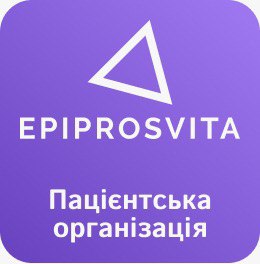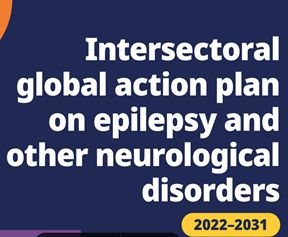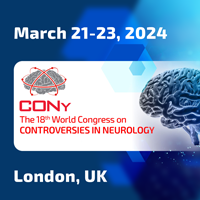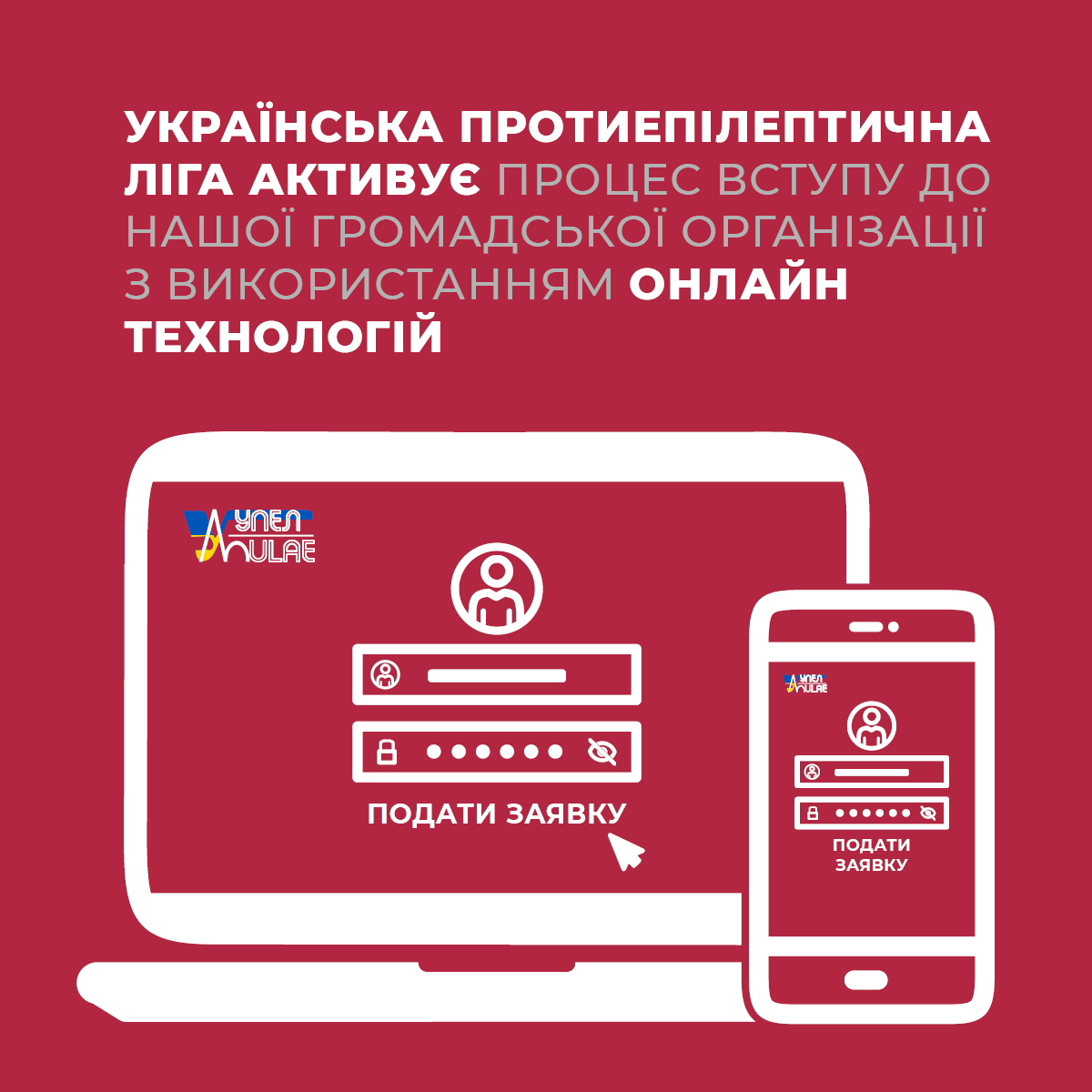Editor’s Choice vol. 85: Barbara Mostacci et al., Alternatives to valproate in girls and women of childbearing potential with Idiopathic Generalized Epilepsies: state of the art and guidance for the clinician proposed by the Epilepsy and Gender Commission of the Italian League Against Epilepsy (LICE).
Markus Reuber MD PhD, Academic Neurology Unit, University of Sheffield, Royal Hallamshire Hospital, Glossop Road, Sheffield, S10 2JF
Since the serendipitous discovery of its anticonvulsant properties in 1962 (1), sodium valproate, previously thought of as a metabolically inert solvent for organic compounds, has gone on to become the world’s most widely prescribed antiseizure medicine (2). Unfortunately, subsequent experience has shown that sodium valproate does not only have therapeutic, but also adverse effects: After a letter published in The Lancet in 1980 had raised initial concern about the teratogenic potential of valproate in animal models (3), a birth defects monitoring system in France detected a relatively high rate of sodium valproate use in mothers of children born with neural tube defects, and a combination of features collectively termed fetal valproate syndrome was first described in 1984 (4). In 2004, the evidence of teratogenicity was strengthened by a study of longer-term developmental outcomes demonstrating a significantly lower verbal IQ in those whose mothers had taken valproate during pregnancy (5). Several subsequent confirmed that in utero exposure to this drug was causally linked to a range of neurodevelopmental problems, such as autism and developmental delay in up to 40% of exposed children (6-9).
In view of this mounting evidence, in February 2018, the European Medicines Agency (EMA) recommended that VPA should only be used in women of childbearing age if their epilepsy has not responded to other AEDs, and if they are enrolled in a pregnancy prevention programme (‘PREVENT’) (10). Concerns about the use of valproate have also increased among young women not actively planning pregancy in view of evidence documenting the potential of this drug to cause Polycystic Ovary Syndrome, a disorder associated with reduced fertility and a number of other longterm complications (11).
However, in parallel with the discoveries about the potential of sodium valproate to cause serious adverse effects this drug has also been confirmed to be the most effective antiepileptic drug when an idiopathic generalised epilepsy (IGE) syndrome is suspected (12-13). The dilemma raised for young women with IGE and their clinicians by the clear evidence of potential of harm on the one hand and the equally clear evidence of therapeutic advantages over alternative medicines on the other has given rise to complex ethical debates which have featured previously in Seizure (14).
My Editor’s Choice from the current volume of Seizure, a “state of the art and guidance” document written by Barbara Mostacci et al. on behalf of the Italian branch of the ILAE (15), is intended to help those affected by the valproate dilemma by summarising what is known about the effectiveness of alternatives to valproate in a range of different IGE treatment scenarios. Mostacci et al. have used what evidence there is from a number of rather heterogeneous studies to provide detailed treatment algorithms, which go well beyond initial alternative antiseizure medicine choices for particular types of IGE. The evidence Mostacci et al. have gathered for this document does not remove the dilemma, but it should allow its readers to make the best possible choice in a difficult situation.
References
- Meunier H, Carraz G, Neunier Y, Eymard P, Aimard M. [Pharmacodynamic properties of N-dipropylacetic acid]. Therapie 1963;18:435-8. [Article in French].
- Perucca E . Pharmacological and therapeutic properties of valproate: a summary after 35 years of clinical experience. CNS Drugs 2002;16: 695–714.
- Brown N A, Kao J, Fabro S. Teratogenic potential of valproic acid. Lancet 1980;v. 1,8169:660-661
- Diliberti J H et al. The fetal valproate syndrome. Am J Med Genet 1984;19: 473-481.
- Adab N et al. The longer term outcome of children born to mothers with epilepsy. J Neurol Neurosurg Psychiatry 2004;75: 1575-1583
- Meador K J et al. Cognitive function at 3 years of age after fetal exposure to antiepileptic drugs. N Engl J Med 2009;360:1597-1605.
- Bomley R L et al. Early cognitive development in children born to women with epilepsy: a prospective report. Epilepsia 2010;51: 2058-2065.
- Cummings C et al. Neurodevelopment of children exposed in utero to lamotrigine, sodium valproate and carbamazepine. Arch Dis Child 2011;96:643-647.
- Bromley R L et al. The prevalence of neurodevelopmental disorders in children prenatally exposed to antiepileptic drugs. J Neurol Neurosurg Psychiatry 2013;84:637-43.
- European Medicines Agency. Valproate and related substances. EMA/145600/2018.2018. http://www.ema.europa.eu/ema/index.jsp?curl=pages/medicines/human/referrals/ Valproate_and_related_substances/human_referral_prac_000066.jsp& mid=WC0b01ac05805c516f.
- Isojärvi JIT, Taubøll E, Herzog AG. Effect of Antiepileptic Drugs on Reproductive Endocrine Function in Individuals with Epilepsy". CNS Drugs 2005;19:207–223.
- Marson A G et al. The SANAD study of effectiveness of valproate, lamotrigine, or topiramate for generalised and unclassifiable epilepsy: an unblinded randomised controlled trial. Lancet 2007;369:1016-1026, Mar 2007.
- Marson A G et al. The SANAD II study of effectiveness of valproate or levetiracetam in generalised and unclassifiable epilepsy: an un-blinded randomised controlled trial. Epilepsia, 2019,60:25 cited from: https://www.cochranelibrary.com/central/doi/10.1002/central/CN-02095526/full?cookiesEnabled
- Davies P, Reuber M, Grunewald R, Howell S, Dickson J, Dennis G, Shanmugarajah P, Tsironis T, Brockington A. The impact and challenges of the 2018 MHRA statement on the use of sodium valproate in women of childbearing age during the first year of implementation, in a UK epilepsy centre. Seizure 2020;79:8-13.
- Mostacci B et al., Alternatives to valproate in girls and women of childbearing potential with Idiopathic Generalized Epilepsies: state of the art and guidance for the clinician proposed by the Epilepsy and Gender Commission of the Italian League Against Epilepsy (LICE). Seizure 2021;85:26-38.
Вибір редактора том 85: Barbara Mostacci et al., Альтернативи вальпроату у дівчат та жінок дітородного потенціалу з Ідіопатичними Генералізованими Епілепсіями: сучасний стан та рекомендації для клініциста, запропоновані Комісією з Епілепсії та Гендерних Питань Італійської Протиепілептичної Ліги (LICE).
Markus Reuber MD PhD, Академічне відділення неврології, університет Шеффілда, Королівська лікарня Халламшира, Glossop Road, Sheffield, S10 2JF
З тих пір як у 1962 році завдяки щасливому випадку були відкриті його протисудомні властивості (1), вальпроат натрію, який раніше вважався метаболічно інертним розчинником органічних сполук, став самим широко призначаємим у світі протиепілептичним препаратом (ПЕП) (2). На жаль, подальший досвід показав, що вальпроат натрію має не тільки терапевтичний, але й несприятливий ефект: після того, як у листі, опублікованому The Lancet у 1980 р., була висловлена початкова стурбованість потенціальним тератогенним ефектом вальпроату на експериментальних моделях (3), система моніторингу вроджених дефектів у Франції виявила відносно високий рівень використання натрію вальпроату у матерів дітей, які народилися з дефектами нервової трубки, і поєднання ознак, спільно названих фетальним синдромом вальпроату, який вперше було описано у 1984 році (4). У 2004 році дані про тератогенність були підсилені результатами довгострокового дослідження, що продемонструвало значно нижчий рівень IQ у тих, чиї матері приймали вальпроат під час вагітності (5). Кілька подальших досліджень підтвердили, що внутрішньоутробний вплив цього препарату був причинно пов'язаний з низкою проблем нейророзвитку, таких як аутизм та затримка розвитку приблизно у 40% дітей, які зазнали ризику (6-9).
З огляду на ці велику доказову базу, у лютому 2018 року Європейське агентство з лікарських засобів (EMA) рекомендувало застосовувати вальпроат лише жінкам дітородного віку, якщо в них епілепсія не реагувала на інші ПЕП та якщо вони включені у програму профілактики вагітності (‘PREVENT’) (10). Побоювання з приводу застосування вальпроату також зросли серед молодих жінок, які активно не планували вагітність, через докази, що підтверджують здатність цього препарату викликати синдром полікістозних яєчників, розлад, пов'язаний зі зниженням фертильності і рядом інших довгострокових ускладнень (11).
Однак паралельно з відкриттями про потенціал вальпроату натрію спричинити серйозні побічні ефекти, також було підтверджено, що цей препарат є найефективнішим антиепілептичним препаратом при підозрі ідіопатичну генералізовану епілепсію (ІГЕ) (12-13). Дилема, поставлена перед молодими жінками з ІГЕ та їх клініцистами через чіткі докази потенціальної шкоди, з одного боку, і не менш чіткі докази терапевтичних переваг перед альтернативними лікарськими засобами, з іншого, породила складні етичні дискусії, про які йшлося раніше в журналі «Seizure» (14).
Мій Вибір як редактора з поточного тому " Seizure " – стаття що написаний Barbara Mostacci et al. яка є представником Італійської протиепілептичної ліги, яка є активним членом МПЕЛ (15). Ця робота покликана допомогти тим, хто страждає від дилеми призначення вальпроату, яка описана вище. Підсумовуючи те, що відомо про ефективність альтернатив вальпроату в ряді різних сценаріїв лікування ІГЕ Mostacci et al. використовували дані, що підтверджуються низкою досить неоднорідних досліджень, щоб надати детальні алгоритми лікування, які виходять далеко за рамки початкового альтернативного вибору протиепілептичних ліків для певних типів ІГЕ. Докази Mostacci et al., які зібрані у цьому документі, не знімає дилеми, але дозволяють читачам зробити найкращий можливий вибір у цій складній ситуації.
Література
- Meunier H, Carraz G, Neunier Y, Eymard P, Aimard M. [Pharmacodynamic properties of N-dipropylacetic acid]. Therapie 1963;18:435-8. [Article in French].
- Perucca E . Pharmacological and therapeutic properties of valproate: a summary after 35 years of clinical experience. CNS Drugs 2002;16: 695–714.
- Brown N A, Kao J, Fabro S. Teratogenic potential of valproic acid. Lancet 1980;v. 1,8169:660-661
- Diliberti J H et al. The fetal valproate syndrome. Am J Med Genet 1984;19: 473-481.
- Adab N et al. The longer term outcome of children born to mothers with epilepsy. J Neurol Neurosurg Psychiatry 2004;75: 1575-1583
- Meador K J et al. Cognitive function at 3 years of age after fetal exposure to antiepileptic drugs. N Engl J Med 2009;360:1597-1605.
- Bomley R L et al. Early cognitive development in children born to women with epilepsy: a prospective report. Epilepsia 2010;51: 2058-2065.
- Cummings C et al. Neurodevelopment of children exposed in utero to lamotrigine, sodium valproate and carbamazepine. Arch Dis Child 2011;96:643-647.
- Bromley R L et al. The prevalence of neurodevelopmental disorders in children prenatally exposed to antiepileptic drugs. J Neurol Neurosurg Psychiatry 2013;84:637-43.
- European Medicines Agency. Valproate and related substances. EMA/145600/2018.2018. http://www.ema.europa.eu/ema/index.jsp?curl=pages/medicines/human/referrals/ Valproate_and_related_substances/human_referral_prac_000066.jsp& mid=WC0b01ac05805c516f.
- Isojärvi JIT, Taubøll E, Herzog AG. Effect of Antiepileptic Drugs on Reproductive Endocrine Function in Individuals with Epilepsy". CNS Drugs 2005;19:207–223.
- Marson A G et al. The SANAD study of effectiveness of valproate, lamotrigine, or topiramate for generalised and unclassifiable epilepsy: an unblinded randomised controlled trial. Lancet 2007;369:1016-1026, Mar 2007.
- Marson A G et al. The SANAD II study of effectiveness of valproate or levetiracetam in generalised and unclassifiable epilepsy: an un-blinded randomised controlled trial. Epilepsia, 2019,60:25 cited from: https://www.cochranelibrary.com/central/doi/10.1002/central/CN-02095526/full?cookiesEnabled
- Davies P, Reuber M, Grunewald R, Howell S, Dickson J, Dennis G, Shanmugarajah P, Tsironis T, Brockington A. The impact and challenges of the 2018 MHRA statement on the use of sodium valproate in women of childbearing age during the first year of implementation, in a UK epilepsy centre. Seizure 2020;79:8-13.
- Mostacci B et al., Alternatives to valproate in girls and women of childbearing potential with Idiopathic Generalized Epilepsies: state of the art and guidance for the clinician proposed by the Epilepsy and Gender Commission of the Italian League Against Epilepsy (LICE). Seizure 2021;85:26-38.
Editor’s Choice vol. 84: Parul Agarwal, Huaqing Xi, Nathalie Jette, Jung-yi Lin, Churl-Su Kwon, Mandip S. Dhamoon, Madhu Mazumdar. A Nationally Representative Study on Discharge against Medical Advice among those Living with Epilepsy
Markus Reuber MD PhD, Academic Neurology Unit, University of Sheffield, Royal Hallamshire Hospital, Glossop Road, Sheffield, S10 2JF
Previous studies suggest that around 3% epilepsy patients leave hospital against medical advice [1]. Seizures are one of the three most common symptoms leading to emergency room presentations which ultimately end in Discharge Against Medical Advice (DAMA) [2]. DAMA gets in the way of proper discharge planning, may lead to medication errors, repeated seizures and other poor health outcomes. It is therefore no surprise that patients who decide to leave hospital prematurely are at strongly increased risk of being re-admitted to hospital within 30 days [1]. Not least because of the high risk of re-admission, DAMA also represents a financial challenge for health and social care systems.
My Editor’s Choice from the current volume of Seizure is an original research paper by Parul Agarwal et al. [3], which seeks to explore the causes and predictors of DAMA. Their study uses the National Inpatient Sample (NIS) for the years 2003 to 2014. The NIS includes all inpatient discharges across 44 states and the District of Columbia, representing more than 96% of the U.S. population. It is a nationally representative database maintained by the Agency for Healthcare Research and Quality. The large case numbers and the availability of data spanning a period 12 years allow detailed exploration and the exploration of temporal trends. For the purpose of their analysis, Agarwal et al. split the available sample of inpatient admissions into those that ended in DAMA vs. those where the final discharge occurred with the clinicians’ approval.
The figures from 2014 provide an impression of the size of the problem: Out of 7,071,762 admissions, 187,850 were coded as related to epilepsy, 3,783 of whom (2.01%) were identified as ending in DAMA. Of the variables which distinguished between the two outcomes in univariate analyses, a number of predictors continued to make a significant contribution to a multivariate model: Blacks had higher odds of DAMA than Whites (AOR = 1.12, 95% CI = 1.02, 1.22, p = 0.02), admissions of patients from poorer households were more likely to end in DAMA (adjusted OR (AOR) = 1.90; 95% CI = 1.65, 2.18; p < 0.0001), more Medicaid than Medicare (AOR = 2.14; 95% CI = 1.93, 2.37; p<0.0001) and self-pay admissions (AOR = 3.99; 95% CI = 3.47, 4.59; p<0.0001) admissions were associated with DAMA. Weekend admissions ended in DAMA more commonly than weekday admissions (AOR = 1.17; 95% CI = 1.08, 1.26; p<0.0001). A lower risk of DAMA was associated with older age (AOR = 0.991; 95% CI = 0.989, 0.993; p<0.0001), higher levels of comorbidity (AOR =0.97; 95% CI = 0.96, 0.97; p<0.0001), female sex (AOR = 0.67; 95% CI = 0.62, 0.71; p<0.0001), Hispanic extraction (AOR = 0.74; 95% CI = 0.64, 0.86; p<0.0001), elective admissions (AOR = 0.34; 95% CI= 0.28, 0.42; p<0.0001), and hospital location in the Midwest (AOR = 0.57; 95% CI = 0.49, 0.69; p<0.0001) compared to the Northeast US.
Although epilepsy patients whose admissions ended with DAMA had fewer comorbidities overall, some specific comorbidities (including alcohol and drug abuse disorders as well as mood disorders) were associated with an increased risk of DAMA. Alcohol-related disorders were among the top 5 causes of admission in people with epilepsy who left against medical advice.
The proportion of epilepsy-related admissions ending in DAMA increased substantially between 2003 and 2014 (from 1.13% to 2.01%, p<0.0001).
While the findings of this study can only provide an initial impression of the causes and predictors, the potential of DAMA to fragment care provision, to put patients at risk and waste limited health care resources are so obvious that this study should serve as a wake-up call not only to health but also to social service providers. Especially the near doubling of DAMA since 2003 is deeply troubling. Further research into what actually motivates patients to leave hospital against medical advice is urgently required. The largely social risk factors identified in this study suggest that DAMA is not simply an ending of one particular episode of inpatient care but an expression of a much more profound estrangement between patients with epilepsy and those providing medical care for them.
References
- Raja A, Trivedi P D, Dhamoon M S. Discharge against medical advice among neurological patients: Characteristics and outcomes. Health Services Research 2020, 55:681-689.
- Hoyer C, Stein P, Alonso,A. et al. Uncompleted emergency department care and discharge against medical advice in patients with neurological complaints: a chart review. BMC emergency medicine 2019 (19) 52, doi.org/10.1186/s12873-019-0273-y
- Agarwal P, Xi H, Jette N, Lin J-Y, Kwon C-S, Dhamoon MS, Mazumdar M. A Nationally Representative Study on Discharge against Medical Advice among those Living with Epilepsy. Seizure 2021 84:84-90
Вибір редактора том 84: Parul Agarwal, Huaqing Xi, Nathalie Jette, Jung-yi Lin, Churl-Su Kwon, Mandip S. Dhamoon, Madhu Mazumdar. Національне репрезентативне дослідження виписки пацієнтів зі стаціонару всупереч медичним рекомендаціям серед осіб, які мають епілепсією
Маркус Реубер, доктор медичних наук, відділення академічної неврології, Університет Шеффілда, Королівська лікарня Халламшир, Глоссоп-роуд, Шеффілд, S10 2JF
Попередні дослідження показали, що близько 3% пацієнтів з епілепсією залишають лікарню передчасно за власної ініціативи без медичних рекомендацій [1]. Напади є одним з трьох найбільш поширених симптомів, що призводять до надання невідкладної допомоги, яка в кінцевому підсумку закінчується випискою пацієнта всупереч медичним рекомендаціям (англійський термін Discharge Against Medical Advice DAMА) [2]. Феномен DAMA заважає правильному плануванню виписки, може призвести до помилок у лікуванні, повторних нападів та інших поганих наслідків для здоров'я. Тому не дивно, що у пацієнтів, які вирішили передчасно залишити лікарню, існує суттєво підвищений ризик повторної госпіталізації протягом 30 днів [1]. Не в останню чергу через високий ризик повторної госпіталізації, DAMA також представляє фінансову проблему для систем охорони здоров'я та соціального забезпечення.
Мій редакційний вибір з поточного тому журналу «Seizure» – це оригінальна дослідницька робота Parul Agarwal et al. [3], яка спрямована на вивчення причин та предикторів DAMA. У їх дослідженні використовується Національна стаціонарна вибірка (NIS) за період з 2003 по 2014 рік. NIS включає в себе всі стаціонарні виписки в 44 штатах і окрузі Колумбія, що становить понад 96% населення США. Це національна репрезентативна база даних, що ведеться Агентством з питань досліджень та якості охорони здоров’я. Велика кількість випадків захворювання і наявність даних, що охоплюють період в 12 років, дозволяють проводити детальне дослідження і вивчення тимчасових тенденцій. Для цілей свого аналізу Agarwal et al. розділили наявну вибірку госпіталізацій на ті, які закінчилися DAMA, і ті, де остаточна виписка відбулася зі схвалення клініцистів.
Дані за 2014 рік відображають масштаби проблеми: з 7071762 випадків госпіталізації 187850 були кодовані як ті, що пов'язані з епілепсією, 3783 з яких (2,01%) були ідентифіковані як ті, що закінчуються DAMA. Зі змінних, які розрізняли два результати в одноваріантному аналізі, ряд предикторів продовжували робити значний внесок у багатоваріантну модель: у чорношкірих шанси на DAMA були вищі, ніж у білих (AOR = 1,12, 95% ДІ = 1,02, 1,22, p = 0,02), госпіталізація пацієнтів з бідніших домогосподарств частіше закінчувалася DAMA (скоригована OR (AOR) = 1,90; 95% ДІ = 1,65, 2,18; p <0,0001), програма безкоштовної медичної допомоги незаможним і малозабезпеченим переважала над програмою безкоштовної медичної допомоги літнім людям (AOR = 2,14; 95% ДІ = 1,93, 2,37; p<0,0001) та самооплачувані госпіталізації (AOR = 3,99; 95% ДІ = 3,47, 4,59; p<0,0001) були пов'язані з DAMA. Прийом у вихідні дні закінчувався з DAMA раніше, ніж у будні (AOR = 1,17; 95% ДІ = 1,08, 1,26; p <0,0001). Менший ризик DAMA був пов'язаний із старшим віком (AOR = 0,991; 95% ДІ = 0,989, 0,993; p <0,0001), вищими рівнями супутньої патології (AOR = 0,97; 95% CI = 0,96, 0,97; p <0,0001), жіночою статтю (AOR = 0,67; 95% ДІ = 0,62, 0,71; p <0,0001), латиноамериканським походженням (AOR = 0,74; 95% CI = 0,64, 0,86; p <0,0001), плановими госпіталізаціями (AOR = 0,34; 95% ДІ = 0,28, 0,42; р <0,0001) та розташуваннями лікарень на середньому заході (AOR = 0,57; 95% ДІ = 0,49, 0,69; р <0,0001) порівняно з північним сходом США.
Хоча у пацієнтів з епілепсією, госпіталізація яких закінчилася DAMA, загалом було менше супутніх захворювань, деякі конкретні супутні захворювання (включаючи алкоголізм та наркоманію, а також розлади настрою) були пов'язані з підвищеним ризиком DAMA. Розлади, пов'язані з алкоголем, входили в топ-5 причин госпіталізації людей з епілепсією, які залишили лікарню всупереч медичним рекомендаціям.
Частка госпіталізацій, пов'язаних з епілепсією, що закінчуються DAMA, істотно зросла в період з 2003 по 2014 рік (з 1,13% до 2,01%, р<0,0001).
Незважаючи на те, що результати цього дослідження можуть дати лише початкове уявлення про причини та предиктори, потенціал DAMA фрагментувати надання медичної допомоги, піддавати пацієнтів ризику і витрачати обмежені ресурси охорони здоров'я настільки очевидний, що це дослідження повинно послужити тривожним сигналом не тільки для охорони здоров'я, але і для постачальників соціальних послуг. Особливо глибоко турбує подвоєння DAMA з 2003 року. Терміново потрібне подальше дослідження того, що насправді мотивує пацієнтів залишати лікарню всупереч медичним рекомендаціям. В основному фактори соціального ризику, виявлені в цьому дослідженні, свідчать про те, що DAMA – це не просто закінчення одного конкретного епізоду стаціонарного лікування, а вираз набагато глибшого відчуження між пацієнтами з епілепсією і тими, хто надає їм медичну допомогу.
Література:
- Raja A, Trivedi P D, Dhamoon M S. Discharge against medical advice among neurological patients: Characteristics and outcomes. Health Services Research 2020, 55:681-689.
- Hoyer C, Stein P, Alonso,A. et al. Uncompleted emergency department care and discharge against medical advice in patients with neurological complaints: a chart review. BMC emergency medicine 2019 (19) 52, doi.org/10.1186/s12873-019-0273-y
- Agarwal P, Xi H, Jette N, Lin J-Y, Kwon C-S, Dhamoon MS, Mazumdar M. A Nationally Representative Study on Discharge against Medical Advice among those Living with Epilepsy. Seizure 2021 84:84-90
Editor’s Choice vol. 83: Beydoun A, Dupont S, Zhou D, Matta M, Nagire V, Lagae L. Current role of carbamazepine and oxcarbazepine in the management of epilepsy.
Markus Reuber MD PhD, Academic Neurology Unit, University of Sheffield, Royal Hallamshire Hospital, Glossop Road, Sheffield, S10 2JF
We are all creatures of habit. It requires much less mental effort to stick with an established routine than to deviate from it and approach a given task differently. However, as clinicians we must remain prepared to learn throughout our working lives, we have to review the way we manage illness regularly, and we must force ourselves to change when medical knowledge has moved on. While this may not be controversial in principle, the decision whether the time has come to change a well-established treatment method or to stick with a familiar, time-honoured approach is rarely clear-cut.
The use of carbamazepine (CBZ) as an antiseizure medicine (ASM) is a good example. This compound was first synthesised in the 1950s – at a time when vinyl were still competing with shellac records. Does this and the fact that there are so many more recent ASM choices mean that CBZ is now past its sell-by date? Is it ethical to prescribe CBZ when there are alternatives with fewer side effects and drug interactions? Conversely, is it ethical to use more expensive alternatives (including eslicarbazepine) when funds are limited and there are so many other health problems to tackle? Is it better to prescribe drug with known side effects or one with an unknown long-term safety profile? Is oxcarbazepine (OXC) a sensible middle way?
My Editor’s Choice from the current volume of Seizure, a narrative review by A. Beydoun et al., provides the information which readers to decide what choice they should make (1). Readers are not only encouraged to read this comprehensive review article, but then to test their own conclusions by going on to read three editorials on the subject CBZ “oldie but goodie?” by also Roy Berran (2) Charlotte Lawthom (3) and Martin Brodie (4).
Perhaps readers will conclude that they don’t want to their treatment approach (yet), but the review article and these editorials demonstrate that it would not be appropriate to continue using CBZ out of habit alone. Epileptologists need to weigh up the arguments and come to a considered judgement on this important aspect of their practice.
References
1) Beydoun A, Dupont S, Zhou D, Matta M, Nagire V, Lagae L. Current role of carbamazepine and oxcarbazepine in the management of epilepsy. Seizure 2020; 83: 251-263
2) Beran R. Carbamazepine (Tegretol) –An Oldie but a Goodie –A Clinician’s Perspective. Seizure 2020; 83: 243-245
3) Lawthom C. Carbamazepine: Out with the Old, In With the New?! Seizure 2020; 83: 246-248
4) Brodie M. Carbamazepine and me! Seizure 2020; 83: 249-250
Вибір редактора, Том 83: Beydoun A, Dupont S, Zhou D, Matta M, Nagire V, Lagae L. Сучасна роль карбамазепіну і окскарбазепіну в лікуванні епілепсії.
Markus Reuber, доктор медичних наук, Академічний відділ неврології, Університет Шеффілда, Королівська лікарня Халламшир, Глоссоп-роуд, Шеффілд, S10 2JF
Всі ми – люди звичок. Це вимагає набагато менших розумових зусиль, щоб дотримуватися встановленого режиму, ніж відхилятися від нього і підходити до задачі інакше. Однак, як клініцисти, ми повинні залишатися готовими вчитися протягом усього нашого трудового життя, ми повинні регулярно переглядати те, як ми лікуємо, і ми повинні змусити себе змінитися, коли медичні знання рухаються вперед. Хоча це не може бути суперечливим в принципі, рішення про те, чи прийшов час змінити встановлений метод лікування або дотримуватися знайомого, визнаного часом підходу, рідко буває однозначним.
Гарним прикладом є використання карбамазепіну (CBZ) в якості протиепілептичної терапії (ПЕТ). Ця молекула вперше була отримана у 1950-х роках – у той час, коли вініл ще конкурував з пластинками шелаку. Чи означає це і той факт, що існує так багато останніх варіантів вибору ліків проти нападів, що час використання карбамазепіну (CBZ) минув? Чи етично призначати CBZ, коли є альтернативи з меншою кількістю побічних ефектів і лікарських взаємодій? І навпаки, чи етично застосовувати більш дорогі альтернативи (включаючи еслікарбазепін), коли кошти обмежені та існує так багато інших проблем зі здоров’ям, які потрібно вирішувати? Чи краще призначати препарат із відомими побічними ефектами або препарат із невідомим довгостроковим профілем безпеки? Чи є окскарбазепін розумним рішенням?
Мій вибір як редактора з поточного тому журналу «Seizure» - оглядова стаття A. Beydoun з співавт. надає читачам інформацію про те, який вибір вони повинні зробити (1). Їм пропонується не тільки прочитати цю оглядову статтю, але і перевірити свої власні висновки, прочитавши три редакційні статті на тему «Карбамазепін (CBZ) – старий, але гарний?» написані Roy Berran (2) Charlotte Lawthom (3) та Martin Brodie (4).
Можливо, читачі дійдуть висновку, що вони не хочуть використовувати свій підхід до лікування (поки що), але ця оглядова стаття та ці редакційні статті демонструють, що було б недоцільно продовжувати використовувати CBZ лише за звичкою. Епілептологи повинні зважити усі аргументи і прийняти зважене рішення щодо цього важливого аспекту у клінічній практиці.
References
1) Beydoun A, Dupont S, Zhou D, Matta M, Nagire V, Lagae L. Current role of carbamazepine and oxcarbazepine in the management of epilepsy. Seizure 2020; 83: 251-263
2) Beran R. Carbamazepine (Tegretol) –An Oldie but a Goodie –A Clinician’s Perspective. Seizure 2020; 83: 243-245
3) Lawthom C. Carbamazepine: Out with the Old, In With the New?! Seizure 2020; 83: 246-248
4) Brodie M. Carbamazepine and me! Seizure 2020; 83: 249-250





